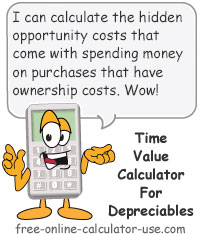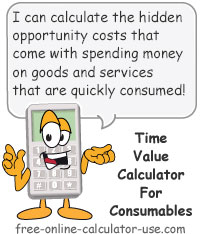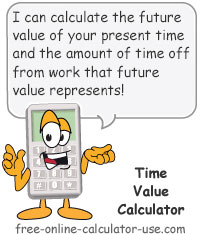IMPORTANT: Numeric entry fields must not contain dollar signs, percent signs, commas, spaces, etc. (only digits 0-9 and decimal points are allowed).
Click the Terms tab above for a more detailed description of each entry.
Step #1:
Enter the opportunity cost variables, which include: the annual return on your investments your hourly wage, and the number of years you would like to calculate opportunity costs for.
Step #2:
Enter the asset purchase variables, which include: the asset name, the number of years you plan to own the asset, the base price, the salvage value, the sales tax percentage (if applicable), the miscellaneous fees, and the cash down-payment if financing.
Step #3:
If you are financing any portion of the purchase, enter the financing cost variables, which include: the loan rate, the number of months to finance, and any loan fees that will apply.
Step #4:
Enter any annualized ownership costs that will come with the purchase of the asset, which might include costs such as energy, insurance, storage, maintenance, repairs, licenses, permits, and property tax costs.
Step #5:
Click the "Calculate Opportunity Costs" button and scroll down to view the results and the summary.




Follow me on any of the social media sites below and be among the first to get a sneak peek at the newest and coolest calculators that are being added or updated each month.